If you’re expecting a straight line out of Central Serous Retinopathy, you’re setting yourself up for frustration.
Mine went like this:
- Week 1: Panic
- Week 2: Hope
- Week 3: Sharp improvement
- Week 4: Random setback
- Week 6: Clearer vision
- Week 7: Stress spike, symptoms return
- Week 8: Realized this wasn’t a sprint
Welcome to the looping timeline of CSR recovery.
It’s not clean.
But it is trackable—if you know what to look for.
The Pattern Most People Don’t Expect
Here’s how it usually plays out:
- Initial flare hits. Vision goes blurry, distortion shows up. Panic sets in.
- You change everything. Sleep improves. Stress drops. Diet cleaned up.
- Vision starts to improve. You relax… maybe a little too much.
- You start doing more. Back to longer hours, caffeine, late nights.
- Minor stress hits. A flare “echo” shows up.
- You realize: this thing demands consistency—not intensity.
That realization changed how I approached the whole recovery process.
3 Patterns That Kept Repeating for Me
1. Sleep Dictated Everything
If I got 2–3 nights of light, fragmented sleep?
Symptoms crept back. Not always a full flare, but enough to notice.
Once I made deep sleep a priority—full blackout, no tech, magnesium—I saw real, sustained improvement.
2. Stress Wasn’t Always Obvious
Sometimes I wasn’t “stressed” in the usual sense—
I was just ramped up all day, always thinking, planning, pushing.
CSR doesn’t just respond to crisis.
It responds to constant low-grade tension.
When I lowered background pressure (even 20–30%), recovery picked up.
3. Flares Echo—They Don’t Always Mean You’re Back at Zero
This was huge.
Some weeks I’d feel a flicker of blur or distortion and panic: Is it back?
But I learned:
Not every symptom means a full relapse.
Sometimes it’s just your body saying: “Hey—ease up.”
Treat it like a warning, not a disaster.
How I Track My Own Recovery Now
- I don’t check my vision obsessively
- I log sleep, stress, screen time, symptoms once a week
- If something spikes, I adjust quickly—not dramatically
This keeps me ahead of full flares.
Bottom Line
CSR recovery isn’t linear.
It’s not about perfection—it’s about patterns.
The goal isn’t to never feel a flicker again.
The goal is to respond better, faster, and with less fear every time it happens.
That’s what real progress looks like.

